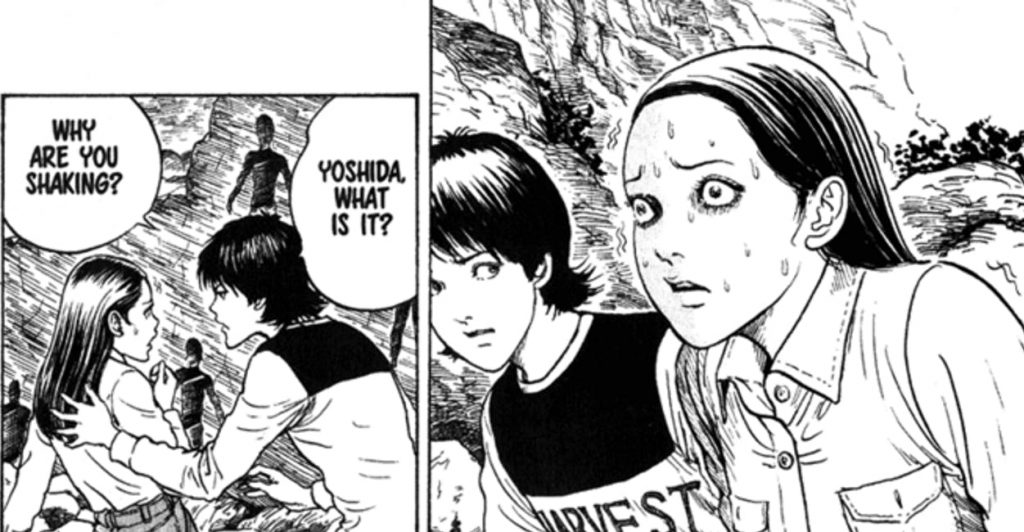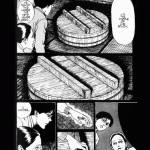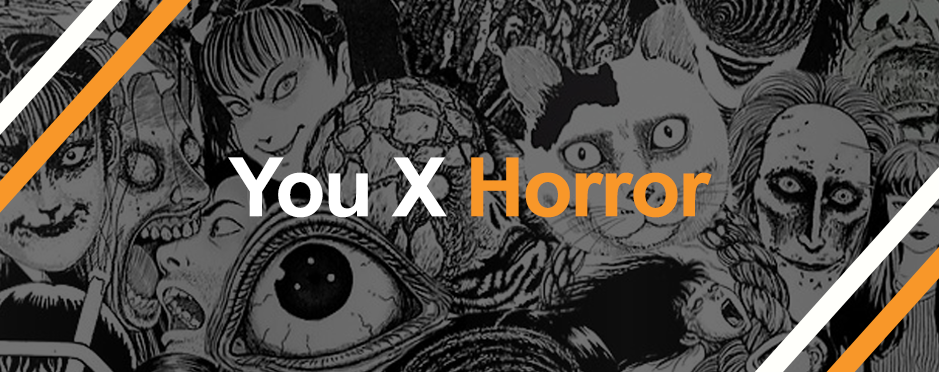“You X …” is a recurring series on creative ideas and interesting stories to inspire great UX design. You X Horror is the second in this series.
Interaction design presents UXers with a unique opportunity to explore human psychology in ways that scientific studies couldn’t ever (ethically) imagine. Without really thinking about it, users are directly interacting and being influenced in their decisions by user experience design.
Obviously, user experience designers must be careful with how they use this power. Although unethical design exists, YOU would never use questionable design to take advantage of a user, right?
But what if I told you about someone who is designing their user experience to actively prey on the worst compulsions of their users, leaving them terrified or disturbed, all while receiving universal praise and success for this masterful manipulation?

Junji Ito turns the page to absolute horror
Junji Ito (2019 Eisner Award recipient) is a horror manga artist who has been drawing some of the most celebrated, cerebral horror ever inked on a page since the early 1990s. His work has been adapted several times to the screen in his native Japan, and Adult Swim recently announced a 4 episode adaptation of Ito’s most well-known work, Uzumaki, set to broadcast in 2020.

What makes Ito’s work so acclaimed? Aside from artistic mastery of his craft, a totally original style that turns ordinary house cats into eerie abominations, and his marriage of Lovecraftian cosmic horror with Cronenberg-esque body horror, Ito also posses an exceptionally unique trait that should make him an iconic figure in the UX community: he utilizes his medium to do something other mediums can’t do…
The page turn
 Junji Ito is working in a medium that requires the user to progress the story. Unlike film, for example, the user is deciding to continue the story, and crucially, to encounter the scare via turning the page.
Junji Ito is working in a medium that requires the user to progress the story. Unlike film, for example, the user is deciding to continue the story, and crucially, to encounter the scare via turning the page.
Ito structures his work in such a way as to best fill his audience with a sense of impending doom by often placing the biggest scares at the very top of a new page, while alluding to something dreadful at the very end of the previous page.
By doing this, Ito is forcing the user to actively engage in his work and essentially scare themselves, making it all the more personal. You should be all but certain that something unimaginably horrible lies in wait on the next page, but you turn it anyway.
What is this thrilling compulsion that leads Ito’s captive audience to do something that they know will scare them?

The enigma of Junji Ito’s death drive
Ito, in a perfect meta-analysis, addresses one of the psychological principles driving his user experience in what is probably his most well-known short work, The Enigma of Amigara Fault.
The story begins just after an earthquake in rural Japan reveals a long series of human-shaped holes carved into the side of a newly exposed fault. Despite geologic study, there is no explanation for these ancient holes that run deeper into the mountain than equipment can explore.
Meanwhile, ordinary people (such as our protagonist, Owaki) feel themselves drawn to the phenomenon. Upon arrival, Owaki learns that some believe the holes to be perfectly carved for a specific person. Initially skeptical, Owaki witnesses a man disappear into a certain hole after claiming it to be his perfect fit.

The next day, a chaotic sequence breaks-out as more and more people begin finding “their hole” and slipping inside, never to be seen again.
The same principle that compels the people of Amigara to slip into holes with their fate uncertain is similar to what compels readers of Ito’s work to turn the page: todestriebe.
Inexplicable human compulsions
Todestriebe, or death drive, is a concept first conceived by Russian psychoanalyst and physician Sabina Spielrein in 1912, but was later expanded upon and popularized by Sigmund Freud. The death drive is the inexplicable compulsion humans feel to self-destruct and is in direct opposition to Eros, according to Freud, which is the drive for life, sex, preservation, and so on.
Ito is hot-wiring the brain to react in a primal, innate way that can’t be easily helped. He’s able to manipulate us simply because he’s structured his work to heighten the reader’s sense of danger with the placement of anticipatory panels at the ends of pages. And, like the people in Amigara, we just… have to know.

One of Ito’s primary influences, 20th century science fiction and cosmic horror author HP Lovecraft, emphasized a similar threat in his works. Lovecraft’s work features a recurring fear of the unknown, but with the tragic, human compulsion to attempt an understanding, almost inevitably resulting in doom.
What Junji Ito offers the user experience industry
Embrace and utilize your medium

UXers stand at a unique crossroads of several disciplines: psychology, sociology, art, design, business, and more. Don’t minimize what you do to mere conversions or necessarily quantifiable data. Use your medium to achieve things only UX can.
In the same way that Ito is working at a severe disadvantage in his own genre (as he notes, film has the distinct luxury of sound and music to build suspense and horror), UXers must find a way to harness their skillset to best service the user-product relationship.
Ask yourself what you offer that other disciplines can’t:
- Can researchers apply their data to design?
- Can designers interpret and relay the information meaningfully?
- Is the information being used in a user-centric way?
- Who can communicate the nuances to stakeholders unfamiliar with UX research, design, and usability in general?

Anchor your design to human experience
For UX designers and researchers working in 2019, human-centered design has become a trendy, maybe even mandatory, approach.
You’re busy building systems to be used by humans, so don’t forget to stop and think about what that implies and what responsibility comes attached.
Remember: Users are people, not conversions.
All of Ito’s work addresses something that is immediately recognizable and familiar to most people. His stories veer sharply into the fantastic, but only after establishing a coherence within the reality of a world not unlike our own. He understands and relates to us. This is one of his greatest strengths, and is a helpful example for UX designers who want to understand what will work for a user.
Psychology by design
The use of basic psychological principles in the UX industry is nothing new, and yet many UXers take for granted what it means to design empathetically with their users. Taking the time to understand your users and relate to their experience is a crucial aspect of any winning UX design.
Junji Ito understands our worst compulsions, and he knows the thrilling sensation of a good scare. He draws what frightens him, and what he believes frightens others. He’s a user-centric designer crafting an intensely human experience, fear, which takes a sophisticated and thoughtful level of empathy.

Unlike many of his influences, Ito doesn’t often bother with typical horror subjects like aliens, vampires, or ghosts to illicit terror. Instead, Ito focuses on the day-to-day, the benign and knowable, and then twists it further and further into the horrible, often grotesque, unknown. Familiar things like caring for a house cat, dealing with acne, or coping with bizarre family members suddenly becomes a psychological terror.
When you’re working on your own user experience design, do what Junji Ito would do.
Do what you believe your audience will respond to.
You may be interested in:




